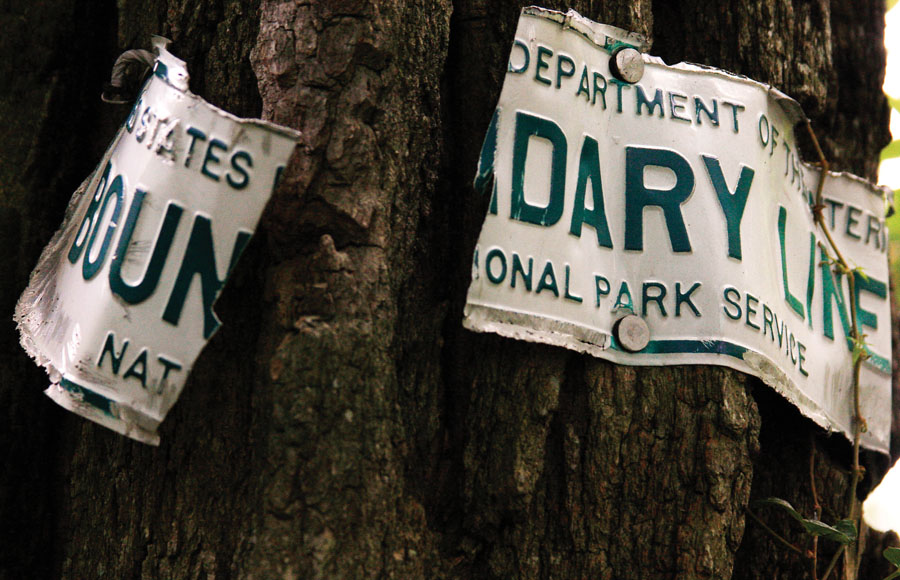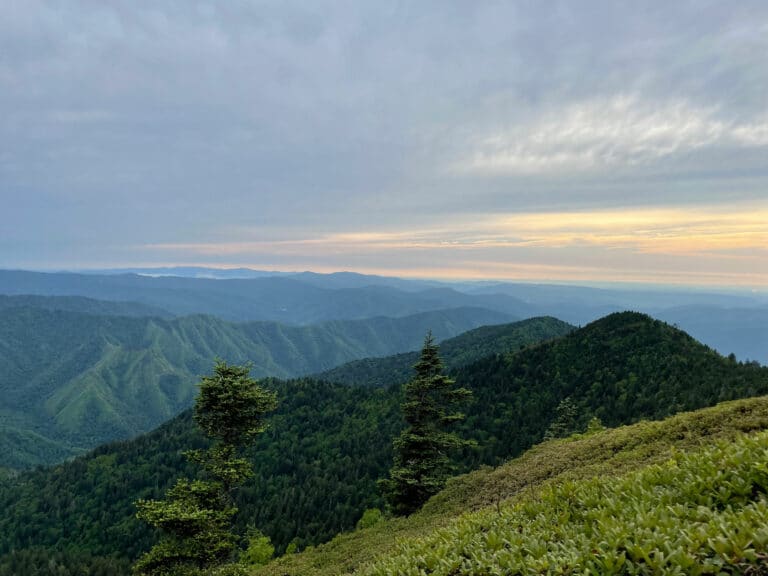The right-wing street rallies that have erupted across the South have largely focused on white supremacy and symbols of the Confederacy, but scratch the surface and you’ll also find opposition to environmental laws and public lands such as national forests and parks.
The Sagebrush Rebellion, a loosely confederated political coalition that’s been around since the 1970s, opposes any public lands owned by the federal government. The Sagebrush movement saw a new push into the mainstream with the 2014 standoff at Cliven Bundy’s Nevada ranch, and again in 2016 when Bundy’s sons led the 40-day occupation of Malheur National Wildlife Refuge in Oregon. The Malheur incident set off a revival, with militias joining in to take part and show support there.
Groups from the South participated in the standoffs out West, and now some of them have brought that ideology back to Eastern public lands. Those groups include the Oath Keepers, a group of current and former military and law enforcement members that claims membership of about 30,000, and the Three Percent United Patriots.
“There’s no reason the federal government should own any land,” said John Pruitt, Virginia leader of the Three Percent United Patriots. “When you let the federal government own something in a state, now they have leverage over you. When they pass our laws and say, ‘Believe what we believe or we’re not going to give you money for roads or lands,’ you become a slave to the federal government. The federal government has a role to play in our nation, but it’s growing into a monster, and if we’re not getting involved, it’s going to devour us.”
Sagebrush ideology and Confederate iconography both are touchpoints in militia culture, linked by their common ties to anti-federal sentiment. In western Virginia, members of the Three Percent hold an annual Confederate flag ride. The 2016 edition of the ride, known as “Rebel-lution,” was attended by Jeanette Finicum, the widow of LaVoy Finicum, a militia member who was killed at Malheur.
Ryan Lenz, senior writer for the Southern Poverty Law Center’s Intelligence Project, says the anti-government Sagebrush Rebellion has a “long history of turning environmental and land-use issues into a rallying point for recruiting.”
One of the forerunners of the Sagebrush Rebellion was a militia known as the Posse Comitatus, which formed in the late ’60s, refusing to recognize any authority above the county level. From the beginning, its core members also were involved with Christian Identity, a racist and anti-Semitic sect based around white supremacy.
James Corcoran, an associate professor at Simmons College who has written two books about the militia movement, says there typically are three elements to a militia or patriot group: an ideological focus such as opposing the federal government or public lands or upholding white supremacy; the militaristic aspect of drilling and openly carrying arms; and a religious element based around protecting Christianity.
“There’s the idea that big government is taking out land from us,” explains Corcoran. “You also have the cultural component, that the intellectuals are ruling us from Washington. There’s the perception that people are trying to take away guns and land and get rid of white Christian America.”
The Sagebrush Rebellion’s anti-government, anti-public lands sentiment is especially prevalent in areas with a lot of national parks and forests. Eighty percent of North Carolina’s Swain County, for example, is owned by the National Park Service, the U.S. Forest Service, the Tennessee Valley Authority, and a Cherokee Indian reservation.
A 1981 New York Times story looking at whether the early Sagebrush movement might go East included this: “County residents reportedly have set fire to land in the Great Smokies as a way of harassing the Park Service. Like their angry counterparts in the West, Swain County residents talk about wanting to turn Park and Forest Service land over to state or private ownership.”
The same story also reported opposition to public lands protection from residents of West Virginia’s Randolph County, about a quarter of which is national forest. Recently, twelve counties in Western North Carolina have passed anti-wilderness resolutions as part of the ongoing Pisgah-Nantahala National Forest management planning process.
Ironically, many militia and Sagebrush groups use public lands for gatherings. White supremacist and militia meetings have taken place at Tennessee’s Norris Dam State Park, Fall Creek Falls State Park, Davey Crockett State Park, and Cumberland Mountain State Park. One group, American Renaissance, which according to the SPLC “promotes pseudo-scientific studies and research that purport to show the inferiority of blacks to whites,” has booked facilities at Tennessee’s Montgomery Bell State Park for six years in a row.
Mike Robertson, director of operations for Tennessee State Parks, said the agency is obligated to provide for public access to parkland regardless of ideology, while also providing opportunities for protesters to voice their opposition.
Public lands are already under assault by the Trump Administration, which has rolled back protections and designations for national monuments. Sagebrush groups in the South—often allied with hunting organizations and state agencies—are aiming to increase privatization of public lands, especially national forests like the Pisgah-Nantahala, whose management plan is being re-written this year.
So far, Sagebrush Rebellion groups are doing what many comfortable conservationists and outdoor enthusiasts have not: getting actively and personally involved in the public lands fight.








